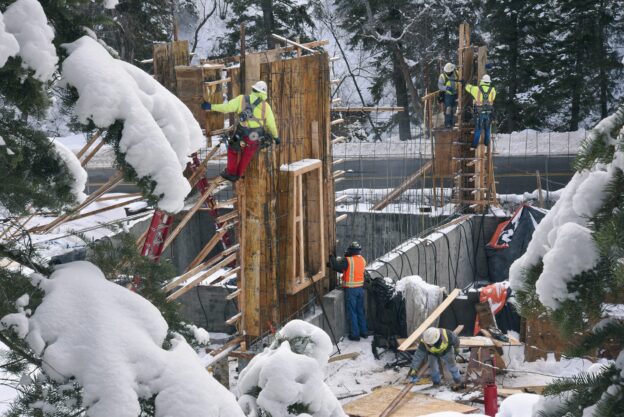This is an article sourced from HRReporter.
An Alberta employer’s blanket refusal of an employee’s request for environmental testing of the workplace did not satisfy its duty to accommodate, the Alberta Human Rights Tribunal has ruled.
The worker was employed with Alberta Health Services (AHS), the province’s healthcare authority, starting in 1992.
For a long time, the worker experienced symptoms affecting her health, but she wasn’t sure what was causing them. Eventually, she believed that her symptoms might be connected to her work environment, so she raised the issue with AHS in August 2016. By this time, she was working as a registered nurse (RN).
“As soon as an employee identifies any type of concern or need for accommodation, that’s where the employer’s duty is really triggered,” says Nathanael Bowles, an employment lawyer at McLennan Ross in Calgary.
“Usually, this comes with some sort of absence or a note from the employee requesting a form of accommodation – in this case, as soon as [the worker] connected the workplace and her symptoms and requested the testing, that’s where the duty was triggered.”
AHS conducted a visual inspection and air quality testing where the worker worked and advised her that there was no indication of mold. It also said that, given the results of the visual inspection, there would be no mold-specific testing performed as it would be expensive.
Medical diagnosis
The worker continued to research her symptoms and thought that she might be suffering from chronic inflammatory response syndrome (CIRS) – a condition caused by sensitivity to environmental elements such as mold. A doctor who was an expert on CIRS diagnosed her with the condition in December 2016.
On Jan. 22, 2017, the worker provided a doctor’s note requesting that AHS conduct environmental relative moldiness index (ERMI) testing before she returned to work. The worker also submitted a request for accommodation asking to avoid working in water-damaged buildings and for any potential workplaces to be ERMI tested.
AHS responded that it would not conduct the ERMI testing as it was not “industry standard” or widely accepted in the medical community. It also said it had to protect all of its employees, which it couldn’t do without standardized testing of all its locations. The worker advised that her doctor was willing to accept HERTSMI-2 testing, which was a cheaper and less comprehensive form of testing.
AHS declined to allow testing, saying it would conduct a visual inspection of the workplace or she could review the vacancy list to see if other RN positions were available in other buildings.
The worker declined these options as they weren’t in line with the doctor’s recommendations. AHS maintained that the worker’s medical documentation didn’t support her claim that she couldn’t work in any location without testing.
The duty to accommodate doesn’t just rest with the employer; employees must do their part as well.
Doctor’s note
The worker provided another medical note stating that ERMI or HERTSMI-2 testing was required to determine if she was likely to be sickened at work.
AHS took the position that the worker could work anywhere that wasn’t water-damaged without testing and its health department had determined that water damage at her workplace that had occurred in 2016 had been fixed. It also said that it had no authority to require improvements to the property because it was leased.
The worker provided a form from her doctor stating that she could not work in any areas that didn’t have the testing performed. AHS responded with three offers of accommodation – she could return with a visual inspection of the building, she could review vacancies elsewhere, or she could return using personal protective equipment (PPE) such as a respirator.
At a meeting on June 13, the worker explained that the tests were non-invasive, would not affect other employees, and she would perform them herself. She advised that she could attend an untested building periodically but not regularly. She also asked why PPE was suggested without medical recommendations.
The worker also proposed remote work answering health line calls, but AHS declined.
The Alberta Human Rights decision re-enforced that employees only have to provide reasonable accommodation, not the employee’s preferred accommodation.
Accommodation stalemate
The parties could not agree on a solution, so AHS terminated the worker’s employment, alleging that the worker was unco-operative in the accommodation process. The worker filed a complaint of discrimination.
The tribunal found that there was no doubt that the worker’s condition constituted a medical disability protected under the Alberta Human Rights Act.
The tribunal also found that AHS’s rejection of the testing was unreasonable. The worker’s condition and the testing were not well-known in the medical community, so it wasn’t surprising that there were debates and the testing was not part of any industry standards, said the tribunal.
However, the tribunal found that there was no evidence that the tests would impact AHS’s operations or the safety of other employees, and all it had to do was grant permission. A lack of standardization or the fact that the property was leased weren’t reasons to reject what was “simple, non-intrusive, and non-expensive,” the tribunal said, particularly since the worker’s medical team recommended it.
“[AHS] uniformly stated that they had to take the safety of all employees into question, which is why they didn’t permit the testing, but then they didn’t provide any evidence about what impact the testing would actually have on any of the other employees,” says Bowles.
Employers have both a procedural duty and a substantive duty to accommodate, says an employment lawyer.
Case-by-case assessment
The tribunal added that even if AHS had a standard policy, its duty to accommodate would require it to review the matter on its own facts.
“There was no evidence that [AHS] actually looked to accommodate the testing – they talked about how the building was leased and that the landlord wouldn’t have approved it, but they never actually demonstrated that they made a request to see if the landlord would approve the testing and permit it,” says Bowles. “There has to be an actual substantive evaluation of an accommodation request, as opposed to a review of regular standards and a blanket denial.”
The tribunal also found that there was clearly back-and-forth communication between the worker and AHS, and the worker made her own proposals for alternate testing and working remotely. AHS’s argument that the worker didn’t co-operate in the accommodation process wasn’t credible, the tribunal said.
Conversely, the tribunal found that it was AHS who was “interested in presenting an appearance of collaboration” but wasn’t “keen on taking the steps that were necessary to address the issues involved.” The reasons for rejecting the testing and its proposals were based on the non-medical opinions of its representatives that ignored the medical information the worker provided. For example, suggesting PPE was based on the opinion of an OHS employee and not any medical authority, and it was not discussed with the worker before being brought forward.
“The employer didn’t utilize medical information – they didn’t go out and get their own third-party medical information with respect to the testing and they didn’t involve the worker’s doctor in the evaluation of the accommodation request,” says Bowles. “The tribunal took issue with that, because in cases where there are questions about what level or form of accommodation is appropriate, it’s best practice for an employer to involve medical advice.”
Employers are not required to hire more staff or create ‘make-work assignments’ to meet the duty to accommodate.
Employer didn’t collaborate
The worker provided AHS with opportunities for collaboration on accommodation solutions, but AHS did not reciprocate in a meaningful way, said the tribunal.
The test to prove undue hardship is that accommodation needs to be evaluated on a case-by-case basis as opposed to a standardized or general basis, says Bowles.
“There were concerns about the position that the employer took with what was basically a blanket denial based on the fact that testing simply wasn’t standard practice, as opposed to an evaluation of the accommodation request on its own merits,” says Bowles. “Instead, they just looked to the standard testing procedures and determined that, because it wasn’t universally accepted as a standard testing procedure, that they couldn’t accommodate.”
The tribunal found that AHS did not look at alternatives provided by the worker and it adopted accommodation measures without input from medical professionals. As a result, the worker was unable to return to work, which was an adverse impact directly related to her disability. This satisfied the second and third elements of the discrimination test, said the tribunal, adding that AHS could not establish undue hardship because it didn’t fully explore accommodation options.
See the original article here: https://www.hrreporter.com/focus-areas/employment-law/alberta-employers-accommodation-efforts-insufficient-to-avoid-discrimination/378799




